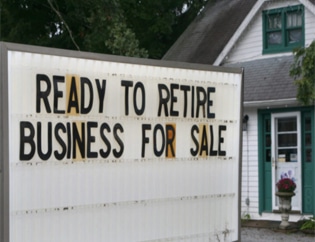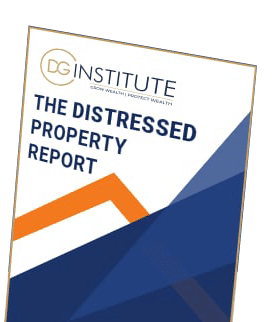5 Tips From A Successful Australian Property Investor
Published 3:48 am 11 Sep 2019

Flipping property can be a risky business. In this article, DG Institute founder and CEO Dominique Grubisa uses a case study to illustrate how you can find and renovate distressed properties – safely.
How to be a successful property investor?
- Find distressed properties
- Learn about the seller
- Manage your renovation
- Design a property that meets market demand
- Surround yourself with like minded people
Television shows like The Block make flipping properties seem fairly simple.
The basic steps are that you buy a property, renovate it, and sell it for profit. However, it’s far more complicated than that. In fact, trying to flip property without the proper knowledge and advice can lead to you losing money.
An article in The Sydney Morning Herald points this out. It says:
“…Flipping is a risky game. There are many risks that have to be managed and only some people are good at it. It takes tenacity and perseverance to be successful.”
With so much risk involved, is it even worth buying a property with the goal of renovating and selling houses for profit?
DG Institute graduate Jason says that it is. Better yet, he has his own success story that proves it. Isn’t it better to hear from a successful Australian property investor?
→ Register Now For Our Exclusive Webinar Briefing On Fixing and Flipping Undervalued Property.
Jason’s House Renovation For Profit
Jason signed up for our Real Estate Rescue & Elite Graduate Program with the goal of learning about flipping properties for profit .
He managed that with the first project he undertook as part of the investment property program.
Jason purchased a property which had it’s mortgage in possession This typically means that the lender takes control of the property to sell it. Often, this is because the owner encounters some sort of difficulty and isn’t able to make their mortgage repayments.
In other words, this is a perfect example of a distressed property.
The lender wanted to achieve $351,000 with the sale. However, Jason knew that he had property leverage because he wanted to make a cash offer. He put in a bid of $290,000 and the lender accepted within three days.
Having bought a below market value property, Jason had already made a profit. He could have put the house on the market straight away and made some money out of it.
However, he decided to complete some cosmetic renovation work to make the property more desirable and increase the property value.
Jason invested $35,000 into the property. This allowed him to achieve a sale price of $425,000, which generated a $70,000 profit through property.
What he learned as part of our course played a huge role in making this success possible. Jason goes on to share five of the lessons that made the biggest difference for him.
Lesson #1 – Finding Distressed Properties
Distressed properties offer big opportunities for investors. They give you the chance to buy an under market value property, as Jason explains:
“Identifying properties that are under market due to certain situations may allow you to purchase at a discount. So, I’m making money when I buy it as well as when I sell afterwards.”
Making money when you buy may seem like a strange idea. However, buying for less than market value means that you are buying property with equity. In some cases, you could put it straight back on the market and make a profit from the sale.
Finding such properties is the true challenge. This is why you need to get the best property investment tips from reliable investors. In Jason’s case, knowing that the property he’d found was a mortgagee-in-possession sale made a difference. He knew that the lender wanted to make its money back as quickly as possible. That’s why he could put in a lower cash offer and feel confident it would get accepted.
There are some tools, such as SQM Research’s reports, that can help you to find distressed properties. However, it’s also worth leveraging Jason’s next lesson…
Lesson #2 – Learn About the Seller
The more that you know about the seller, the more leverage that you have when it’s time to negotiate.
Furthermore, communicating with the seller may reveal that you’ve found a distressed property. The seller may have personal reasons for wanting to sell. For example, they may have undergone a divorce that changes their financial situation. This makes them a motivated property seller who’s more likely to take a lower offer if you can complete the transaction quickly.
However, Jason points to another reason to learn about the seller:
“<understand> that the people have their own reasons to sell and be able to connect with them. Sometimes it’s not always financial. Sometimes they just need someone to talk to or someone to help them out of a bad situation. Being able to interact with them and understand their life and their purpose and what they’ve been through <helps you> to give them what they want in the deal.”
Communicating with the seller creates a bond of trust that may play in your favour when you make your offer.

Lesson #3 – Manage Your Renovation Plan
Generally speaking, it’s best to focus on cosmetic renovations over structural ones. The latter takes up more time and money. Plus, they may require you to obtain certain approvals from the local council, which complicates the process.
However, it’s important that you manage your renovation work based on the purpose of the property. Specifically, the extent to which you renovate depends on whether you’re selling or taking on tenants.
You may choose to rent the property out in a depressed market. Jason suggests not investing as much into the cosmetic aspect in this situation:
“…You wouldn’t put hardwood floors in for the rental market. Lino flooring that’s presented in a nice way is enough to attract a rental market.”
However, you’ll focus on making the property as appealing as possible when you’re selling. This may mean spending more on the renovation work in an effort to add as much value to your home as possible. This could entice the buyer to make a larger offer on the property.
Lesson #4 – Design a Property That Meets Market Demand
Beyond managing how much money you invest when renovating, you also have to consider market demand.
Specifically, there may be a demand for certain property features that you can accommodate in your property. Jason offers an example:
“If you buy a property that has four beds and one bathroom, add in a second bathroom because that’s what the market wants. The parents had their own ensuite with a second bathroom for the kids.”
In this case, the property Jason discusses would appeal to a family. Adding that second bathroom makes it more appealing, which will allow him to command a premium price.
Lesson #5 – Surround Yourself With Like-Minded People
Jason’s final lesson relates to the importance of working within a community of people who have similar goals:
“It’s very easy to have role models within the community. So if somebody else is doing something you want to do, everybody’s welcome to share information and share their journey.”
The point he’s making is that surrounding yourself with like-minded people allows you to learn faster. You can discuss mistakes and strategies. Plus, you may be able to leverage this new network to create opportunities for yourself.
Preparing for Success
Jason’s journey shows that anybody can invest in property successfully. You just need the right tools and guidance, especially if you intend to invest with the goal of profiting from renovations.
Learn as much as you can about the sellers and use the resources available to you to find distressed properties. If you can buy for less than market value, you put yourself in an advantageous position from the start.
When renovating, make sure you work with the market in mind. Furthermore, avoid overcapitalising by planning the renovation based on your investment strategy.
Finally, create a network of like-minded people who will help you to get ahead when investing.
You May Also like to Read
Pressing issues affecting homeowners and prospective buyers
Welcome to this week's edition of the Property Edge newsletter. As we navigate the ever-evolving landscape of Australia’s...
Why Australia Will Never Build Enough Homes
Welcome to this week's edition of the Property Edge newsletter. As we navigate through a rapidly evolving property...
Unlocking Potential: Uncovering Hidden Gems in Australia’s Property Market
Welcome to this edition of Property Edge, where we delve into the latest trends and insights shaping the Australian property...
Suburbs on the Rise: Property Searches Indicate Growth Potential
Welcome to the latest edition of Property Edge, where we delve into the dynamic world of real estate. In this issue, we...
Builder Insolvencies Threaten Government’s Housing Target
Welcome to this week's edition of Property Edge, where we delve into the current state of the property market through the...
Foreign Investment In Australia’s Residential Real Estate Is On The Rise
Welcome to this week's edition of Property Edge, where we delve into the latest trends and developments in the Australian...













